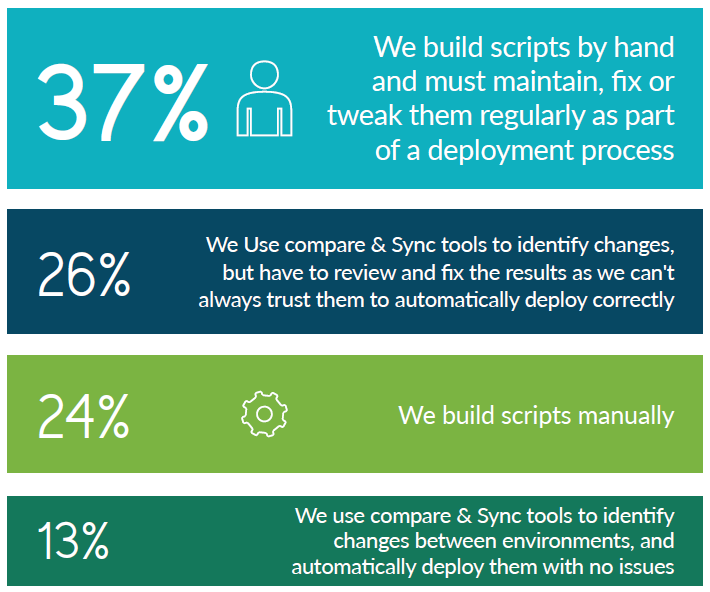Application vs Database Development — Understanding the Disconnect
Ensuring database automation means increased productivity, faster time to market, reduced risk for new releases, and higher quality with fewer bugs. Otherwise, your database will keep lagging and eventually you may find yourself in a difficult situation down the road.
Join the DZone community and get the full member experience.
Join For FreeMore than twice as many organizations have implemented continuous delivery practices for application development compared to those which have implemented continuous delivery practices for database development (61% vs. 30%). These findings are consistent with DBmaestro’s DevOps for the Database 2015 survey of more than 450 IT professionals, which found that 66 percent of respondents were using continuous integration or build automation for their applications, but just 34 percent reporting that they use continuous delivery for the database.
That being said, just 13 percent of respondents who said they use continuous delivery for the database actually have automated processes in place, which is a prerequisite for continuous delivery. The result, for both organizations that haven’t yet implemented continuous delivery for the database and those attempting to implement continuous delivery for the database but without automated processes, is that the database often gets left behind.
Why does this disconnect exist? While 81 percent of respondents in a previous survey indicated that they believed it possible to practice continuous delivery for the database, automation is still largely considered too risky for database deployment. To avoid these risks, most organizations plug the continuous delivery process with time-consuming manual steps that, while minimizing some of the perceived risks of automation, introduce the likelihood of human error.

More than one-third (37%) of organizations build scripts by hand and are thus faced with maintaining, fixing, and tweaking these scripts regularly as part of the deployment process, and more than one-fourth (26%) use standard compare-and-sync tools to identify changes—yet, even compare-and-sync tools require manual review and intervention because there’s no way to guarantee where changes originated or which version is safe for deployment. Just 13% say that they use compare-and-sync tools to identify changes between environments and are able to automatically deploy those changes without experiencing issues. Nearly one-fourth of respondents (24%) build scripts manually.
Download our popular white paper: The Definitive Guide to Database Version Control.
Consider the fact that most organizations are making frequent changes to the database (32% are making database changes daily, while 37% report making database changes weekly) and it’s not difficult to realize the vast resources devoted to inefficient, manual processes that create the need for frequent re-tracing of steps and implementing quick fixes, if not complete crashes or failures. Even if you’re among the lucky 13% of organizations who utilize compare-and-sync tools and automatically deploy changes without issues, odds are you won’t be that lucky with every deployment.
Ensuring database automation means increased productivity, faster time to market, reduced risk for new releases, and higher quality with fewer bugs. Otherwise, your database will keep lagging and eventually you may find yourself in a difficult situation down the road.
For more about automation for the database, download our free eBook: In Database Automation We Trust.
Published at DZone with permission of Yaniv Yehuda, DZone MVB. See the original article here.
Opinions expressed by DZone contributors are their own.

Comments